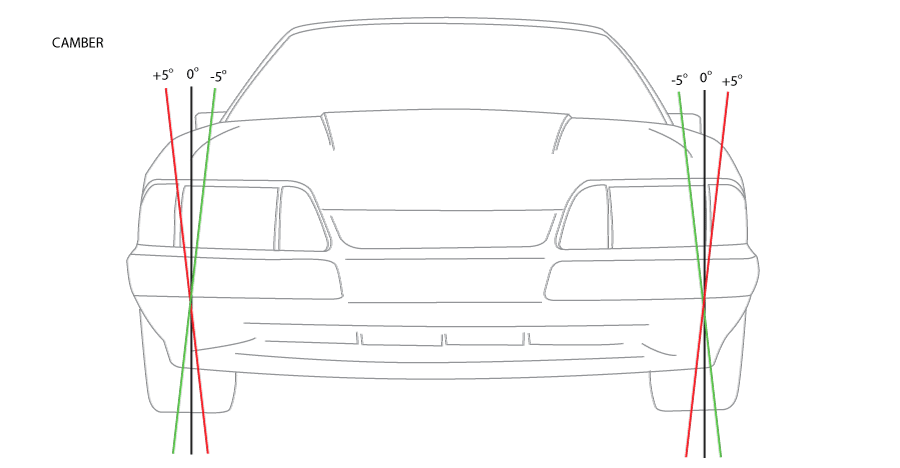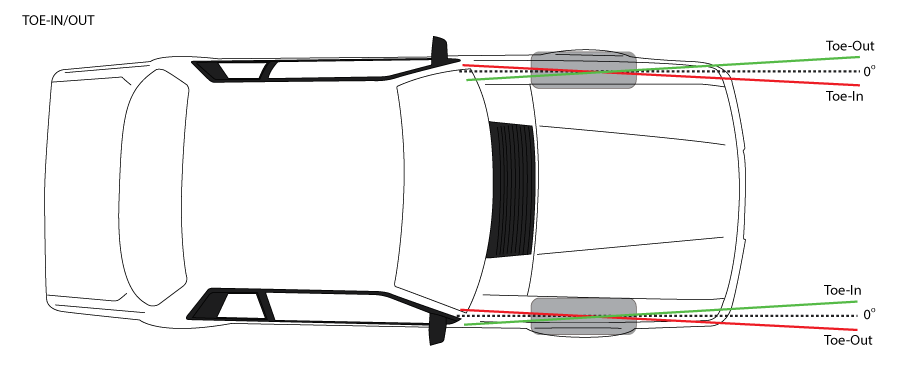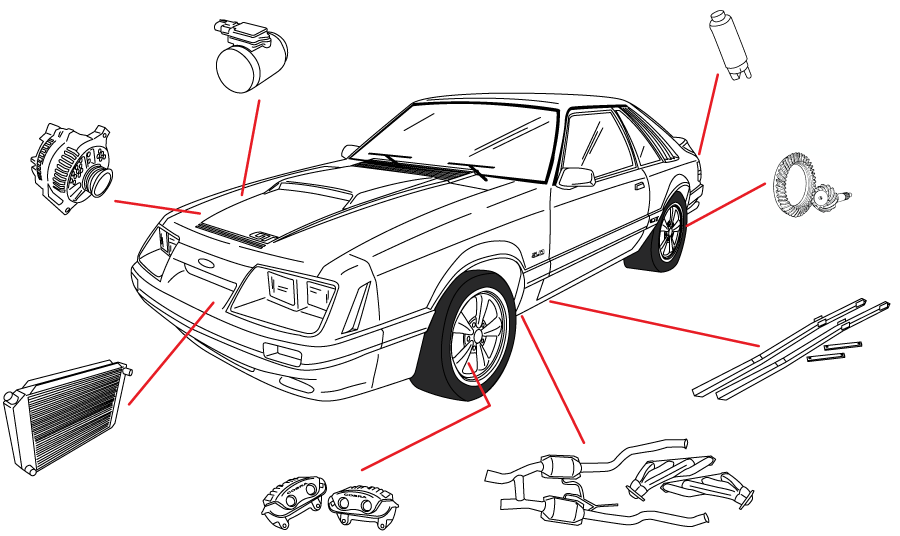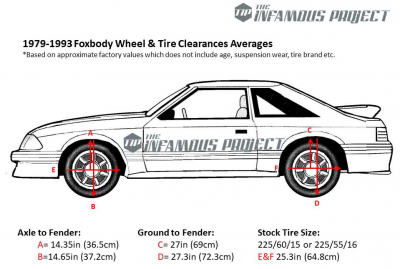It may seem like a simple concept but there are still a lot of people who don’t really know what caster/camber is or what it does to the fox’s driveability. The general consensus is that the fox mustang’s factory caster/camber plates aren’t very great at allowing you to really fine-tune things and especially if you’ve lowered your suspension (are there still fox body Mustangs out there with stock springs?). Below are the explanations on caster/camber and toe to help you figure out how and why people tune their front-end in specific ways.
What is Camber?

Camber is the angle of the wheels relative to the road, looking at the car from the front, positive camber will give the front wheels a “V” shape while negative camber will give it an “A” shape. When you’re cornering, the body will want to start to roll and produce a positive camber. Having negative camber adjustment will compensate for this resulting in more cornering grip, negative camber will also help the car have better straight line stability.
What is Caster?

Caster is the steering turning axis of the wheel from the side of the car. Positive caster is when the line is tilted towards the rear of the car (green line above) and negative tilts towards the front (red line). Positive caster provides self-centering forces which helps the car go straight without holding the steering wheel, otherwise known as directional steering stability. Adding more positive caster will provide you with more feedback while driving the car but at the cost of making it harder to turn as the forces will be fighting against you when steering the car.
What is Toe-in/Out

Toe-in happens when the front wheels are pointing inwards, and toe-out is when the front wheels are facing outward. To help prevent tire wear it’s best to adjust it to be fully parallel. Toe-out will help improve steering response while toe-in will help straight line stability.




